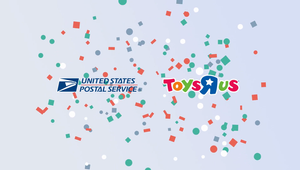
Heart and Head: When Intuition and Evidence Combine with Jon Taylor

Jon Taylor has been appointed as MRM’s first global chief data officer.
As MRM’s capabilities are always underpinned with data at their core, it’s critically important to have an expert leader in all things data to steward clients and teams, and Jon is just that. Jon is an award-winning practitioner of data-driven marketing with over 20 years of industry experience.
Throughout his career, Jon has helped global networks create new audience data products and build teams of data strategists and consultants serving some of the world’s most valuable brands. Previous roles include MW’s EVP, global data and audience and EVP, audience and identity at IPG’s Kinesso.
LBB> What’s the number one question that clients are coming to you with when it comes to how they can better use data to enhance the creativity of their content and experiences?
Jon> Clients’ number one question is “How can we make personalisation feel personal?” There’s a difference between those two things. The myriad of technologies that enable the former has created a trend towards perfection in orchestration and sometimes at the expense of cogent, creative ideas that resonate with audiences on a deeper level.
LBB> How can you make sure that data is elevating creative rather than forming a wind tunnel effect and knocking all the interesting or unique edges off that make something distinctive?
Jon> Data should be a key ingredient in creating distinctiveness in the first place. It should be central to the creative idea, not just the means to activate it in channels.
Of course, data has a huge role to play in optimising how creative ideas are experienced in the places and spaces audiences spend their time, but typically less is more. A testing plan is key to isolate the effects of specific data usage in personalisation.
LBB> Can you share with us any examples of projects you’ve worked on where the data really helped boost the creative output in a really exciting way?
Jon> With MRM Spain we recently launched the 'Allevia Pollen Passport'. This is a tool that uses pollen and air pollution data to visualise and interpret allergy risks in 100+ countries and 70,000+ cities around the world.
It was exciting because it helped address a real-world problem, helping people plan their travel without worrying about allergies and air pollution potentially ruining their trip. Visualisation was the nexus of the data and the creative idea, and a great example of creativity giving genuine utility to data in an engaging and everyday way.
LBB> More brands are working to create their own first party data practice - how can a brand figure out whether that’s something that is relevant or important for their business?
Jon> I can short-cut that debate easily!
First party data is absolutely relevant and important for all brands. Creating a practice around this is usually guided by the volume and variety of first party data a brand has. This is often correlated to the directness of a brand’s relationships with their customers and the strength of the value exchange in that relationship.
A more direct relationship with a strong value exchange tends to lead to more first party data. Brands that lack this should be thinking about how to create that (in a transparent and responsible way). From that point it’s about value realisation – from data capture, management, analysis, enrichment, activation etc. – and that’s our focus at MRM.
LBB> We talk about data driving creativity, but what are your thoughts about approaching the use of data in a creative way?
Jon> Analysing audience and customer data tends to pull you towards averages, whereas it’s usually the outliers that offer more inspiration. Providing these outliers can add up to something scalable, and this can also lead to more unique personalisation opportunities.
Per the Allevia example above, I also think data visualisation is often overlooked when it comes to bringing interesting data to life in a way that resonates with creatives.
LBB> "Lies, damned lies, and statistics" - how can brands and creative make sure that they’re really seeing what they think they’re seeing (or want to see) in the data, or that they’re not misusing data?
Jon> Creative and data need not be in opposition. When intuition and evidence combine – and when ‘heart’ and ‘head’ work together – better results can be achieved. We have evidence of that. Again, the key is thinking through the benefits that data can unlock at the start of the creative process and pursuing those.
Data is rarely infallible of course, so we have duty to challenge the conclusions we draw, disconfirm beliefs etc. Common sense can go a long way, but where that fails, readily available machine learning and AI-based tools can help with things like bias detection to safeguard against false positives and misuse.
LBB> What are your thoughts about trust in data - to what extent is uncertainty and a lack of trust in data (or data sources) an issue and what are your thoughts on that?
Jon> To me, trust in data and trust in data sources are two different things.
Trust in data for me means: can I trust what this data is saying? Is the methodology trustworthy or are there biases that skew the outputs? If so, are these correctable?
Trust in data sources comes down to understanding where the data has come from, under what terms with the consumer. The growth in the data market in the last 10 years has created huge opportunities, but with opportunity comes opportunism. That’s no different in any supply market and the usual procurement due diligence should apply to data, too.
LBB> With so many different regulatory systems in different markets regarding data and privacy around the world – as well as different cultural views about privacy - what’s the key to creating a joined-up data strategy at a global level that’s also adaptable to local nuances?
Jon> The first step is creating a set of global, customer-centric principles that govern how data should be used in marketing programs, aligned to what the brand wants to stand for with its customer or user base.
This is a multi-stakeholder exercise that should have buy-in and support at senior levels. This sets a foundation for a local set of rules that govern day-to-day data usage in accordance with the aspects you’ve mentioned – both regulations and consumer sentiments. These local rules should be co-owned by marketing and privacy leaders and periodically reviewed or refreshed as local dynamics evolve.
This approach allows for local flexibility of data usage within a global framework.
LBB> What does a responsible data practice look like?
Jon> There are three foundational aspects to this for brands:
1) Transparency, notice and choice: offering consumers clarity and specificity on how their data is used as well as clear and easy ways to exercise their rights as data subjects.
2) Data minimisation: only using the data that’s needed – for the time period needed – in order to meet the business objective.
3) Understanding provenance: when using external data, having clarity on how data was collected, under what terms, as well as how it is secured and managed.
LBB> In your view, what’s the biggest misconception people have around the use of data in marketing?
Jon> The biggest misconception is that more equals better.
LBB> In terms of live issues in the field, what are the debates or developments that we should be paying attention to right now?
Jon> The one thing the industry is not paying enough collective attention to is what drives loyalty today versus in the past.
The explosion of commerce, ‘shoppability’ in almost every format, and the rising number of DTC brands, often with narrow product focuses, challenges the tried and tested offer-driven mode of many loyalty programs.
More and more, we’re seeing a desire from customers to have reasons to engage with brands outside of purchase and redemption cycles, on a deeper and more emotional level.
This is where data-centric creativity can shine and where MRM can deliver solutions.















